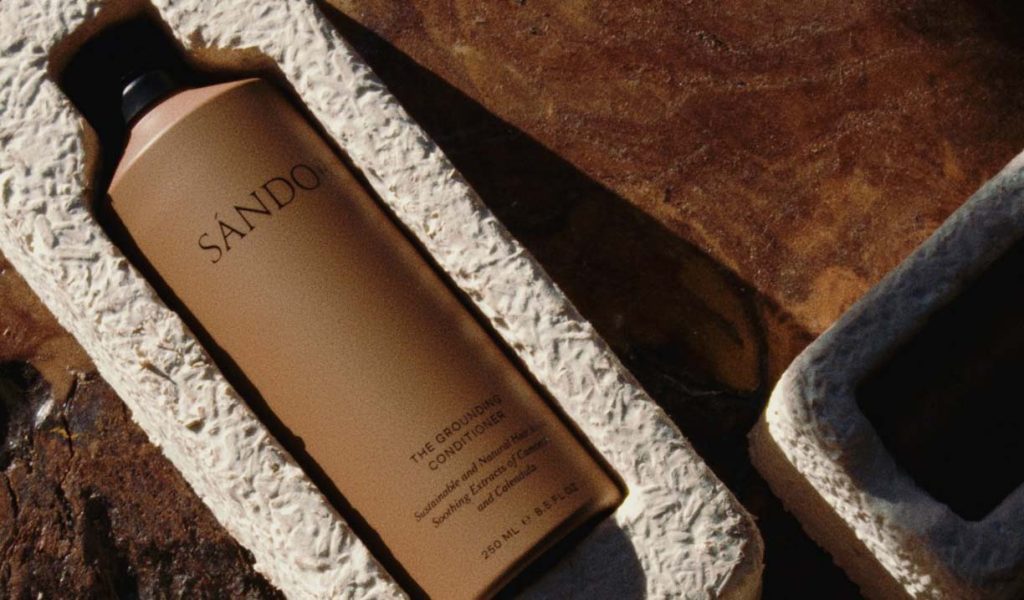As the world moves towards a more sustainable future, the race is on to develop innovations to tackle the global plastics addiction. Gillian Taylor, partner at Reddie & Grose, a firm of UK and European Patent, Trade Mark and Design attorneys, gives her insight into developing patent trends that reveal where sustainable alternatives can be found – from algae water bottles, to mushroom packaging – and how to protect your sustainable packaging innovations in this sector.
The sustainability of a product is more relevant to today’s consumers than ever before. According to a recent survey by Deloitte, one-in-three of us have stopped purchasing brands or products because of ethical or sustainability related concerns about them.
Nowhere is this more acute than in the world of packaging, which for much of the late 20th and early 21st centuries was used once, discarded, and sent to landfill.
This approach is fast becoming unacceptable, with both consumers and governments demanding ever higher standards of sustainability in packaging materials.
However, this cannot come at the cost of the functionality or appearance of the packaging and consumers are unlikely to accept packaging that impacts the quality of the product, particularly in the case of food packaging.
Packaging designers are therefore faced with the challenge of finding innovative solutions which balance the demands for sustainability without sacrificing quality.
It is hard to overstate the scale of the challenge faced by these designers. According to a report from the European Patent Office (EPO), the packaging industry is the single largest user of plastics across Europe, while globally the industry is responsible for producing 47 per cent of the world’s plastic waste. Therefore, anything that can be done to tackle the issue could have a huge effect on global waste and consequently the environment as a whole.
Using patent filings as an indication of innovation, the EPO report also identifies areas where designers and inventors are driving a revolution in sustainable packaging. For example, annually the number of European patent applications relating to circular packaging strategies increased by 27 per cent between 2010 and 2019.
The vast majority of these were directed to ‘zero waste’ innovation where the packaging is removed altogether, such as solid cosmetics and edible coatings. However, there are also significant advances being made in plastic alternative materials and in plastic free packaging. Behind the patent numbers, there are individual stories of pioneering sustainable innovations.
CASE STUDY 1 – WO 2020/030683
The ButterflyCup, dubbed the world’s most environmentally friendly cup is 100 per cent paper and so can be recycled in a regular paper bin along with ordinary paper and cardboard, or can be composted at home, or in a food waste bin.
The key lies in the unique ‘horned’ design of the cup, which allows it to be folded and closed together in two simple folds once the cup has been filled, removing the need for a separate plastic lid.
CASE STUDY 2 – WO 2012/148995
The EPO report highlighted the work of US packaging technology company Ecovative Design that has developed a biodegradable bioplastic that can be used as an alternative to plastic and polystyrene foams.
The bioplastic is formed from mushroom mycelia and can be moulded into multiple shapes and products for a wide variety of industrial and consumer applications.
The live mycelium is fed agricultural waste as it grows for a number of days. It is then harvested, shaped and baked. The resulting material is produced using a fraction of the energy to produce conventional foamed plastics, while also being fully biodegradable.
Intellectual Property Protection
| Importance of seeking the right protection · If your packaging solution is new and solves a technical problem, consider a patent application · If the appearance of your packaging is new and unusual, consider a registered design application · If you believe your packaging is sufficiently unique that it enables your product to be distinguished from a competitors product, consider registering it as a trade mark |
In order to ensure that the drive towards more sustainable packaging continues, it is crucial that packaging innovators seek the right protection for their innovations.
As we have seen above, patents can be vital to allow individuals and companies to take full advantage of their research and development. However, there are several other possible ways designers may protect their sustainable packaging; understanding when, where, and how each of these can be utilised is key to maximising the impact of any bright idea.
Patents
Patents protect technical inventions and provide a robust mechanism to exclude competitors from utilising the invention. However, companies often overlook packaging and fail to realise that their packaging may have some technical aspects that can be protected by patents.
To be patentable, an invention has to be novel and inventive.
At a first glance, packaging may appear to be simple and uninteresting, but there are many ways in which certain aspects of the packaging can be inventive.
For example, an innovator should ask oneself:
- Is the packaging sustainable?
- Is the packaging designed in a way that enables it to be easily stored and/or transported?
- Does the packaging have a closure mechanism that makes it more tamper-proof than existing closure mechanisms?
- Is the packaging formed from a material that provides some advantage, for example, is it permeable to only specific gases?
- Does the packaging extend the shelf-life of a product?
- Is the method for manufacturing the packaging more efficient than conventional methods?
If the answer to any of these is ‘yes’, it may be possible to obtain patent protection for your sustainable packaging.
Registered designs
Designs protect the appearance of a product, which includes packaging. This can be the whole or part of a product resulting from the features of, in particular, the lines, contours, colours, shape, texture or materials of the product or its ornamentation.
A registered design gives the owner the right to prevent others from using the same or similar design.
Since the appearance of a product’s packaging may play a big role in the commercial success of the product, a registered design covering the packaging may be very valuable.
In addition, the process of registering a design is relatively quick and inexpensive. As such, obtaining a registered design directed to the packaging can be a simple way to add commercial value.
Trade marks
Trade marks protect a brand: they identify a product or service and distinguish it from others. When registered, a trade mark gives the owner the right to take action to stop other people from using the same or a confusingly similar mark for the same or similar goods or services.
Once a trade mark becomes well known, it may also give the owner the right to stop other people from trying to benefit from that reputation.
So, in conclusion, the push for sustainability in packaging is driving new thinking in regards to materials, processes and design, all creating the opportunity for innovation to be protected and then shared with the wider worlds to help tackle the environmental challenge that is facing the packing industry.
 Gillian Taylor became a partner at Reddie & Grose in 2011, an internationally renowned firm of European and UK patent, trade mark and design attorneys, that handle the full range of IP rights for a global client base ranging from SMEs starting to consider IP through to large corporations with rights in over 100 countries.
Gillian Taylor became a partner at Reddie & Grose in 2011, an internationally renowned firm of European and UK patent, trade mark and design attorneys, that handle the full range of IP rights for a global client base ranging from SMEs starting to consider IP through to large corporations with rights in over 100 countries.
With clients including a number of multinational corporations, Taylor has considerable experience of filing, prosecuting, and managing patent portfolios in a large number of countries around the world, as well as drafting new patent applications and assisting clients with invention harvesting.







